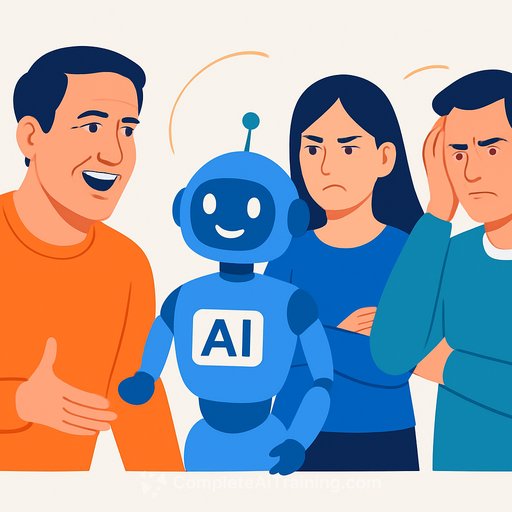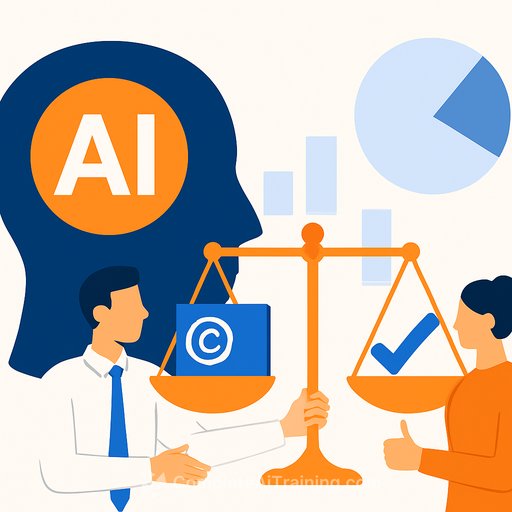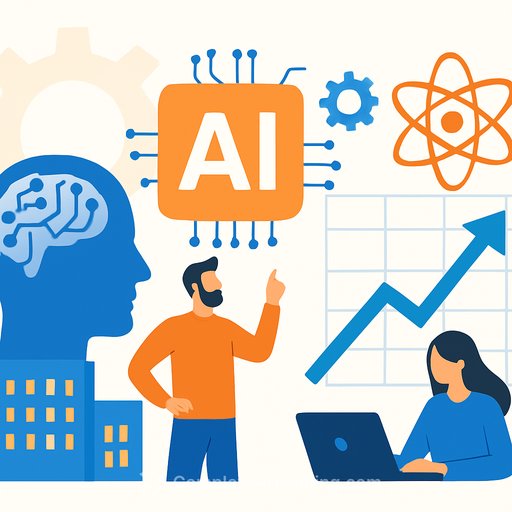AI politics in Australia: tech giants push, creatives push back
Australia is being told to pick a side. On one side, big tech says deeper AI adoption or risk a "two-tier economy." On the other, artists and lawmakers argue that consent, credit, and payment can't be an afterthought.
Here's what's actually happening, and what you can do to protect your work while staying commercially relevant.
What Big Tech is selling
Amazon's cloud arm commissioned a report, "Unlocking Australia's AI potential," produced by UK consultancy Strand Partners. The message: businesses that move first with AI will outpace slower rivals. Strand Partners also appeared on the EU's lobbyist register this year, signaling how much of this debate is now political as well as commercial.
Amazon Web Services has flagged plans to lift total investment in Australia to $20 billion by 2029, largely to expand data centres for AI and cloud services. Google has pushed a similar line, calling support for small and medium businesses using AI a policy "gold standard," urging grants and skills programs through the government's AI Adopt Centres.
Why creatives are pushing back
This week, a Senate inquiry into national cultural policy heard warnings from artists about proposals to let AI developers use text and data mining under a copyright exemption. The core issue is consent: who gets to decide if creative work becomes training data, and who gets paid?
One senator summed up the mood in the room: "Copyright in this country is worth protecting." The concern is simple-if training use is free and frictionless, creative income gets squeezed while platforms grow.
What this means for your practice
Clients will expect faster drafts, reference boards, and variations. AI will sit in more briefs, whether you adopt it or it's used around you. That can compress budgets unless you set terms that protect your IP and turn speed into premium value, not a race to the bottom.
The move now is pragmatic: define your red lines, add usage rules to contracts, and build a process where AI supports your craft without diluting your ownership.
Practical moves for creatives
- Put consent in writing: Add a clause that your work cannot be used to train AI without explicit approval and separate compensation. Require disclosure if a client intends to use AI in any way, and define what "AI-assisted" deliverables include.
- License with precision: Specify scope (media, territory, term), derivatives, and whether synthetic variations are allowed. Add fees for AI-generated adaptations and print-on-demand use.
- Protect your files: Use visible and invisible watermarks. Embed authorship metadata and track versions. For websites, consider blocking known scrapers in robots.txt and mark assets with "noai/noimageai" tags where relevant, acknowledging enforcement limits.
- Differentiate your offer: Package "human-only" and "AI-assisted" options. Sell speed where it helps the client (ideation, mood boards, drafts), and price craftsmanship where it matters (final style, narrative, taste).
- Credit and provenance: Show your process steps. Label AI assistance clearly so clients understand what they're paying for-your taste, direction, and judgment.
- Negotiate training and reference use: If a client wants to fine-tune a model on your style, that's a separate license with clear limits, veto rights, and a meaningful fee.
- Keep leverage: Retain layered working files and key assets until final payment. Include kill fees and usage triggers tied to milestones.
- Participate in policy: Make submissions to consultations, and coordinate through guilds and collectives. The exemption debate is moving fast; silence becomes precedent.
Reading the "two-tier economy" claim
The phrase is meant to push adoption, but there's some truth: creators who learn where AI saves time will ship more work and keep margin. The risk isn't the tool-it's losing control of how your work is used to fuel it.
Adopt with intent. Automate the boring parts. Keep the signature parts human, priced, and protected.
A simple weekly cadence
- Two hours on skills: Test one tool on a single step of your workflow-briefs, thumbnails, color studies, beat sheets, or alt lines-then document what actually saved time.
- One contract upgrade: Add or refine a clause on AI training, provenance, or usage scope. Small edits add up to real protection.
- One portfolio proof: Publish a before/after or process snapshot so clients see the value you add beyond the tool.
Where to level up fast
If you want structured options that respect creative IP while improving output, explore practical picks for your role and toolset:
- AI courses by job - curated paths for writers, designers, illustrators, and editors.
- Top AI tools for generative art - a quick scan of options to prototype, reference, and iterate without giving away your style.
Bottom line
Adopt AI on your terms. Set consent and compensation as defaults, not exceptions. The creators who do both-protect and produce-won't be in the bottom tier of anything.
Your membership also unlocks:






